The space and essence of the cell at the Nobel Laureates
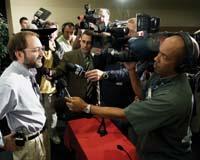
Scientists awarded in three other disciplines are also American. It may be chance, but it is not the only chance. For example, the winner in Chemistry is the son of a Nobel Prize in Chemistry. In this case, it can be said quietly that "What wood, such splinter", since in addition to collecting the novel, both have investigated in the same field.
Although the father and son have a great chance, it is no exception. Five other parents and sons have also received it, and some parents and daughters, and four marriages...
Leaving family affairs, there is another remarkable chance: both the novel of Physiology or Medicine and that of Chemistry are related to the expression of genes. This is, therefore, research carried out in the nucleus of the cell.
Physics has been granted to research in space. Precisely, the background radiation study has won the Nobel Prize in Physics.
The silence of genes in the Nobel Prize in Physiology or Medicine
Andrew Z. Fire and Craig C. Mello
"For finding RNA interference, that is, how genes are silenced through dual-filament RNA"
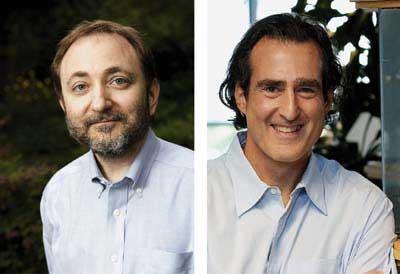
Fire and Mello published a work in 1998. The article explained how messenger RNA (mRNAs) of a particular gene is degraded. This degradation mechanism is very important in gene expression, which causes the disappearance of the RNA molecule. Therefore, the corresponding gene is inactive or "silent", and the protein encoding the gene is not produced.
This degradation mechanism is called RNA interference, i.e. RNA blockage or obstruction, and occurs when RNAm molecules appear bent in the cell. They have been awarded the Nobel Prize for explaining how this process happens.
The footprint that C. elegans gave them
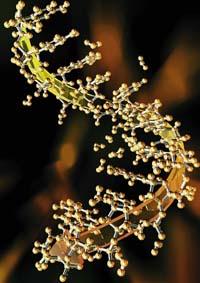
Fire and Mello used the Caenorhabditis elegans worm to illuminate the mechanism. They investigated gene expression. The worm was injected with mRNAs corresponding to a muscle protein and did not experience any changes in the movement of the worm. Then the reverse RNA was injected into that RNA and the same thing: nothing happened. In contrast, the joint injection of the two mRNAs allowed detecting foreign earthworm movements. It is the same movement that worms do without a gene.
Hence it was deduced that the double chain of RNAm has the ability to block the gene, so this strange movement is explained by the fact that the protein needed to move normally was not produced.
The researchers advanced and managed to explain how this happens. In fact, they demonstrated that the double chain of mRNAs degrades the mRNAs of a single chain and proposed that RNA interference is a catalytic process. Currently the process is called RNA.
New opportunities
RNA degradation occurs in plants, animals, and humans. This mechanism is really important as it allows controlling gene expression. It is useful to protect yourself from viruses, especially in the simplest organisms, and also has importance in controlling the DNA fragments called trasposon.
Taking a step further, RNA can be applied to genetic technology. Researchers have managed to create double chains of mRNAs to degrade certain mRNAs and thus silence the corresponding gene. In the future they hope to apply this technique in both medicine and agriculture.
Background radiation for the Nobel Prize in Physics
John C. Mather and George F. Smoot
"To discover that microwave background cosmic radiation has a black body shape and is anisotropic"
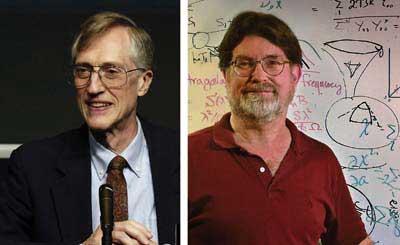
The COBE (COsmic Background Explorer) project was born in 1974 in the United States. It was about investigating the creation of the universe from a wide space, without the atmosphere being disturbed. According to the most accepted hypothesis, the universe was created by the explosion of Big Bang, whose footprint remains in space. This footprint is a background radiation that is currently microwave type. Mather and Smoot worked on the project of the first satellite that studied background radiation, the COBE project.
The background radiation spectrum was previously built, in high mountains or using aerostatic balloons. However, the atmosphere was an obstacle and in order to receive a clean spectrum one had to avoid the influence of the Earth's atmosphere. That is why it was so necessary for a satellite to collect the data.
Therefore, the satellite had to be launched into space. But on the way they found a great obstacle: In 1986 the Challenger ferry delayed NASA missions with ferries after an accident. Consequently, the future of the COBE project was questioned. But the project team did not stop, they say Mather had done a terrible job. He obtained a rocket to launch the satellite and was launched in 1989.
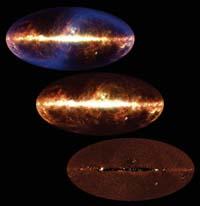
The effort was worth it. Nine minutes after the COBE space, the spectrum of background radiation was sought. This spectrum aroused enormous expectation, as it was exactly the same as that emitted by a black body and corresponded to the Big Bang theory.
Image of the temperature of the universe
After the Big Bang, the temperature of the universe has been decreasing. The wavelength of the background radiation is related to this temperature. However, this temperature is not the same everywhere in the universe. Therefore, they measured the background radiation in all directions and formed the image of the universe according to temperature. This study also provided information on the creation of galaxies and stars.
The COBE accurately collected the difference in background radiation between the directions of the universe. George Smoot was responsible for these measurements and the measuring team.
Smoot and Mather will therefore receive the 2006 Nobel Prize in Physics for their work on background radiation with the COBE satellite.
Nobel Prize in Chemistry: Exposure RNA polymerase
D. Roger Kornberg
"For research on the molecular basis of eukaryotic transcription"
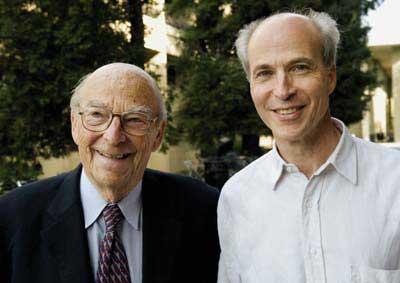
It seems that in the house of the Kornberg there is a great tradition in the research of Genetics. His father, Arthur, received the Nobel Prize in Physiology or Medicine in 1959 (along with Severo Ocho) for investigating how DNA is self-copying; this year his son, Roger, will receive the Nobel Prize in Chemistry for similar research, for studying how DNA transcription occurs in eukaryotes.
For the work of the two generations to refer to the same subject, it must be very important and if the DNA is important, as it keeps the information of life. In this molecule is defined the way to make all the proteins that the cell should synthesize. The cells of all living beings read DNA information, but not all do it the same way.
In simplest living things, such as bacteria, DNA is free within the cell. But in complex living beings, DNA is locked in a capsule called nucleus. And it doesn't come out of there. Therefore, the cell makes a copy of the information inside the nucleus and that copy goes out to the cytoplasm of the cell to do everything necessary. It's like having a specialized library inside the cell, you can't get books, but you can get photocopies in the library itself.
Roger Kornberg has researched, in eukaryotes, how the 'photocopy' of DNA is done in these cells. The copier is a protein: RNA polymerase. Read the DNA and form a molecule like the RNA that contains this information. This is the copy that will come out of the core and that is why it is called messenger RNA (RNAm).

Actually, the copying molecule, RNA polymerase, was known; it is also used by bacteria, even if it is different. French biologists Monod, Lwoff and Jacob investigated how and therefore received the Nobel Prize or Physiology in 1965.
But the operation was not the same in the eukaryotes. Roger Kornberg's merit has been to devise a research system for this difference based on yeast cells. It has obtained surprising results, including detailed photographs of the functioning of RNA polymerase in recent years.
For all this work, this year will be awarded the Nobel Prize. As they gave to their father. All the Kornberg will be proud.





